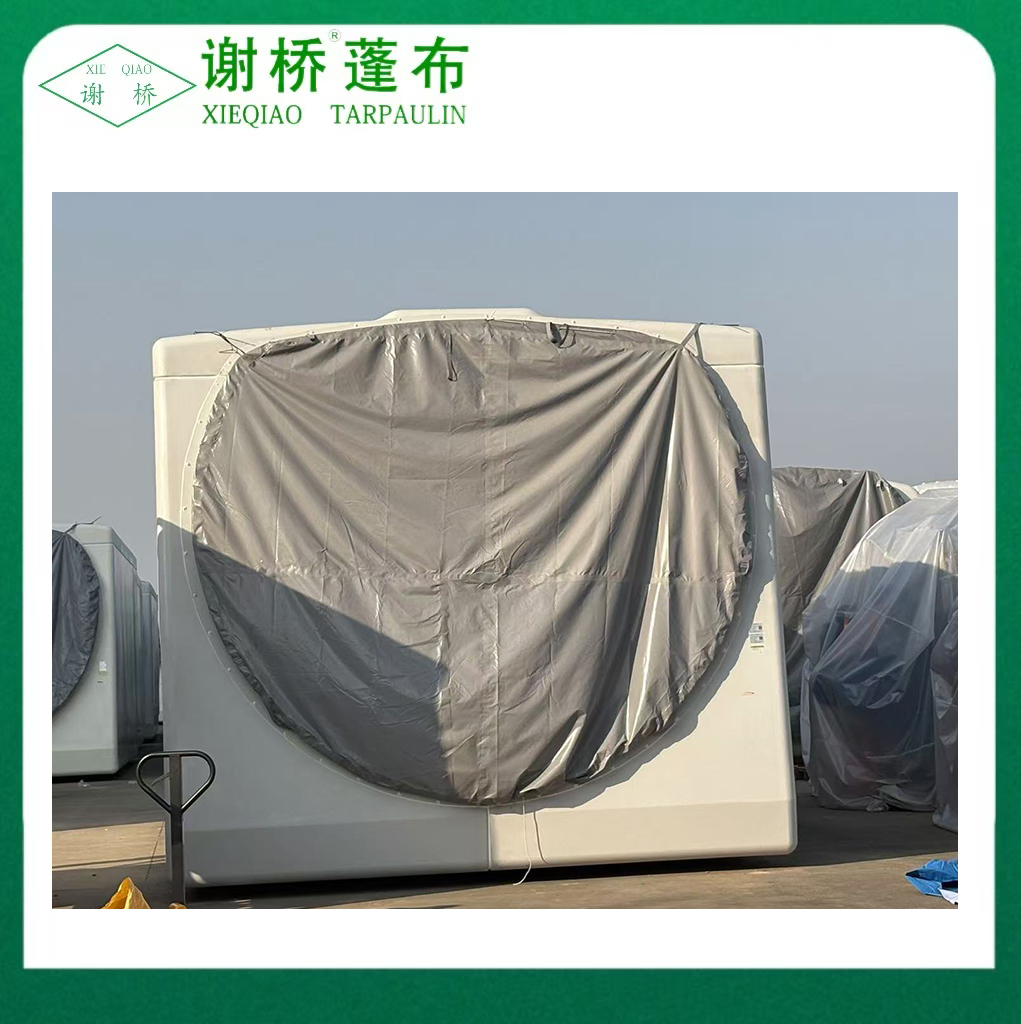Specializing in all kinds of custom tarpaulins Custom Tarpaulin Product Manufacturers
 2025.03.25
2025.03.25
 Industry News
Industry News
Coating technology and stitching process are two key factors that affect the waterproof performance of PVC Waterproof Cover. They directly determine the durability, sealing and overall performance of the product. The following is a detailed analysis of their impact on waterproof performance from these two aspects:
1. The impact of coating technology on waterproof performance
Coating technology is one of the most core links in the production process of PVC waterproof cover, which directly affects the waterproofness, weather resistance and service life of the material.
1.1 The basis of waterproof performance
The core of PVC waterproof cover lies in the PVC coating on its surface. High-quality PVC coating can form a dense protective layer to effectively prevent water penetration.
If the coating is uneven or the thickness is insufficient, it may cause the presence of tiny pores, thereby reducing the waterproof performance.
1.2 Anti-UV and aging ability
Advanced coating technology adds anti-ultraviolet (UV) stabilizers and antioxidants to PVC materials. These additives can delay the aging process of the material and ensure that the waterproof cover still maintains good performance when exposed to sunlight for a long time.
Poor-quality coatings may degrade quickly under ultraviolet light, resulting in cracking or reduced waterproof performance.
1.3 Abrasion and tear resistance
High-quality coatings usually enhance the abrasion and tear resistance of the substrate. For example, double-sided coating or multi-layer composite coating technology can improve the overall strength of the material to a certain extent and reduce the risk of damage caused by friction or pulling.
If the coating technology is not up to standard, the waterproof cloth is prone to wear or tear during use, which in turn affects the waterproof effect.
1.4 Anti-mildew and antibacterial treatment
In a humid environment, the coating technology can also inhibit the growth of mold by adding anti-mildew and antibacterial agents. This not only prolongs the service life of the waterproof cloth, but also avoids the degradation of waterproof performance caused by mold erosion.
2. The impact of stitching technology on waterproof performance
Although the coating technology determines the waterproof performance of the material itself, the stitching process directly affects the sealing of the seams and the overall waterproof effect.
2.1 Limitations of traditional stitching methods
Although traditional needle and thread stitching can fix the fabric, it will leave pinholes during the stitching process. These pinholes may become channels for water penetration and weaken the overall waterproof performance.
For application scenarios that require high waterproof performance (such as outdoor tents or large covers), traditional stitching often cannot meet the requirements.
2.2 Advantages of heat-sealing welding technology
In modern PVC tarpaulin production, heat-sealing welding technology has gradually replaced traditional stitching methods. Heat-sealing welding fuses two pieces of PVC material together at high temperature to form a seamless connection, completely eliminating the pinhole problem.
This process not only improves the waterproof performance of the seams, but also enhances the strength and durability of the seams, and is particularly suitable for high-strength application scenarios.
2.3 Application of sealing strips and adhesive technology
In some special cases, manufacturers will also add sealing strips to the seams or use waterproof glue for secondary treatment. This additional protection can further improve the waterproof performance and ensure that there will be no leakage even in harsh environments.
2.4 Importance of seam design
Reasonable seam design is also crucial. For example, the use of overlapping seam structures can increase the sealing of tarpaulins and reduce the possibility of water penetration.
In addition, the design of the seam direction should take into account the direction of water flow to avoid rainwater penetration along the seams.
3. Comprehensive impact: synergy of coating and stitching
Coating technology and stitching process do not exist in isolation, but complement each other:
Coating provides basic waterproof performance: high-quality coating can ensure that the PVC waterproof cloth itself has excellent waterproof properties.
Stitching process solves the seam problem: advanced stitching technology (such as heat welding) makes up for the potential loopholes in the seams and ensures the integrity of the entire waterproof cloth.
If you only focus on the coating and ignore the stitching process, the seams may become the weak link in waterproof performance; conversely, if the coating quality is poor, even if the stitching process is advanced, it cannot achieve complete waterproofing.
Coating technology and stitching process are key factors in determining the waterproof performance of PVC waterproof cloth. High-quality coating can provide basic waterproof ability and weather resistance, while advanced stitching technology (such as heat welding) ensures the sealing of the seams. Only by combining the two organically can we create a truly efficient and reliable PVC waterproof cloth to meet the use needs in various complex environments.